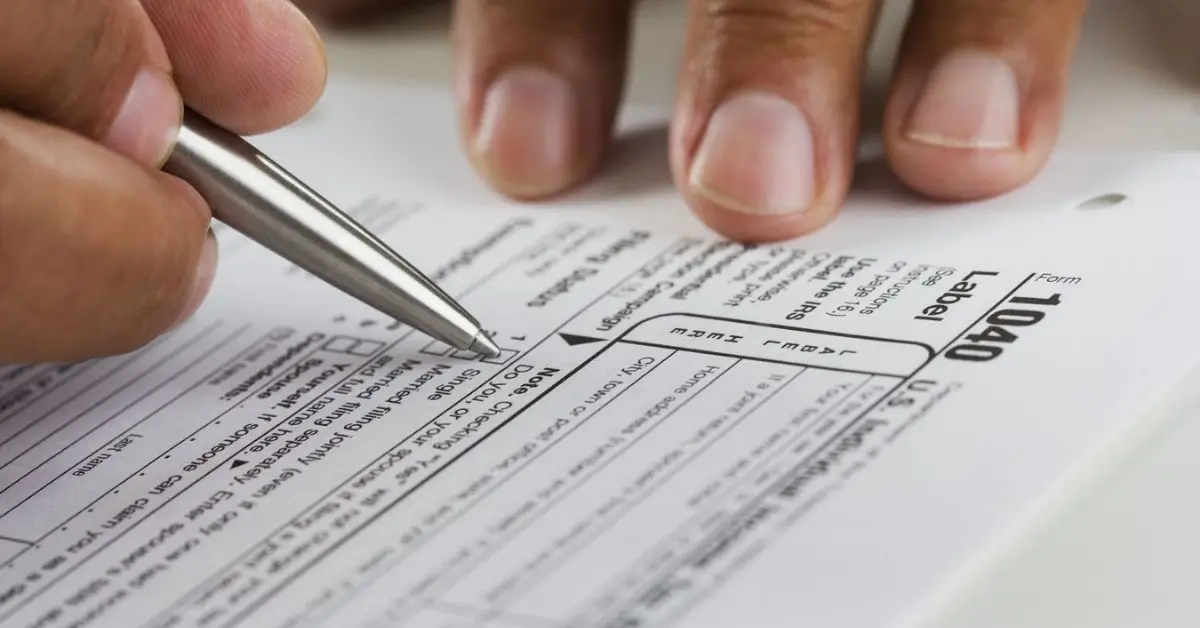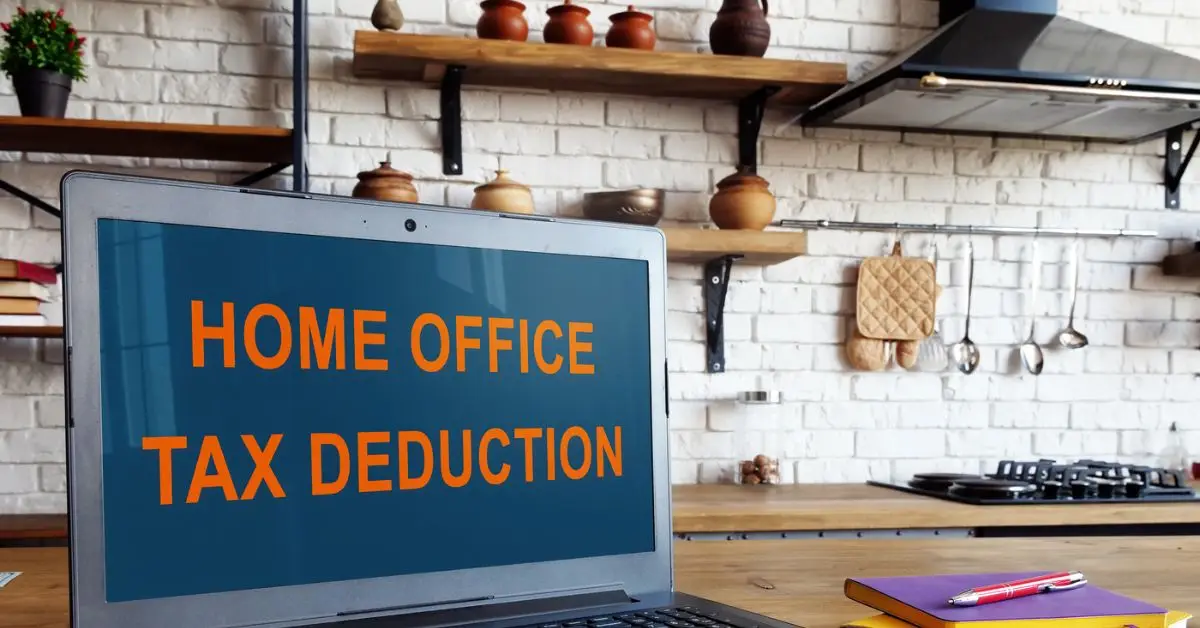Stop Overpaying: 18 Property Tax Write-Offs Most Homeowners Miss
I don’t know about you, but every time tax season rolls around, I wonder the same thing:
Am I leaving money on the table just because I don’t know what I can legally deduct?
If you’re a homeowner in the U.S., chances are—yes, you probably are. Most folks either rely on outdated advice, skip itemizing because it feels “too complicated,” or flat-out don’t know about half the write-offs they’re actually allowed to claim.
That’s not your fault.
Most articles online just skim the surface or talk in circles—listing 5 or 6 obvious deductions without real context, IRS-backed proof, or how they actually work post-SALT cap changes.
So in this guide, I’m walking you through 18 real, practical, IRS-supported property tax write-offs you should know as a homeowner. Some are classic, others are overlooked, and a few might seriously surprise you (yes, even medical-related home upgrades can count).
I’ve built this guide not just to inform—but to help you act.
You’ll get smart strategies, updated 2025 SALT cap info, and even tips from Redditors and tax pros who’ve done this themselves. Whether you own a modest home or a second property, you deserve to claim every dollar you legally can.
Let’s get started—and let’s make sure the IRS doesn’t keep more of your money than it should.
What’s Driving This Guide? Understanding Intent
Let’s be honest—most of us don’t wake up excited to read about tax deductions.
You’re here because you want to save money, plain and simple. Maybe you just got your property tax bill and it stung. Or you’re filing taxes and wondering if that $6,000 you paid to the county actually helps you come April. You’re not alone.
But here’s the kicker:
Most homeowners only claim a small slice of what they could—just because they don’t understand what qualifies.
And when you Google “property tax write offs,” what do you see?
- A few shallow lists (“Top 5 deductions” with zero depth)
- Vague summaries that repeat what you already know
- Articles written for Australian or investor audiences (like the realestate.com.au one—useful, but not for U.S. homeowners)
What’s missing?
Actual homeowner scenarios. U.S.‑based updates (like the recent increase in SALT deduction caps). Clear IRS rules explained simply. And above all—guidance built around you: the person living in the home, paying the bills, and trying to do things right.
That’s why I built this guide. Not to impress the algorithm. To help real people take back control of their taxes, one write-off at a time.
If that’s you—stay with me. It’s about to get real practical, real fast.
Quick Primer: Itemized Deductions & SALT Basics

Before we dive into the write-offs, we need to get one thing straight:
You can’t claim most property-related tax deductions unless you itemize.
If you usually take the standard deduction (like most Americans do), then these write-offs don’t apply—unless your itemized deductions add up to more than the standard. That’s the tradeoff.
So what does itemizing really mean?
It means listing out specific deductions (like property taxes, mortgage interest, medical expenses, etc.) on Schedule A of your tax return instead of just taking the flat standard amount.
Now here’s where it gets tricky—and where most people give up:
Since 2018, there’s been a $10,000 cap on how much you can deduct for State and Local Taxes (SALT)—which includes property taxes and state income or sales taxes. This limit has stopped a lot of homeowners from benefiting, especially in high-tax states like California, New York, or New Jersey.
But here’s the good news:
Starting in 2025, married couples who itemize can deduct up to $40,000 in SALT taxes.
(That’s thanks to a recent IRS rule change, backed by sources like MarketWatch and Barron’s.)
That change alone could make it worth itemizing again—especially if your property tax bill is $8k+ a year.
So before you skip ahead, pause and do a gut check:
- Do your mortgage interest, property taxes, and other deductions add up to more than $13,850 (single) or $27,700 (married)?
- Are you in a high-tax state or city?
- Did you make any big home improvements or charitable donations?
If yes, it’s time to pay attention—because what comes next could be worth thousands.
1. State & Local Real Estate Taxes (SALT)
Let’s start with the one most homeowners think they understand—property taxes.
If you own a home and pay annual real estate taxes to your local government, you can deduct them—but only if you itemize. These payments fall under the SALT umbrella: State and Local Taxes.
Here’s the catch:
From 2018 to 2024, the IRS capped SALT deductions at $10,000 total. That means if you live somewhere with both high property taxes and high state income tax, you hit that cap fast.
Now for the good news:
Starting in 2025, the IRS will raise the SALT cap to $40,000 for married couples filing jointly.
So if you live in states like New Jersey, Illinois, or California, where property taxes alone can top $10k, this change could mean thousands more in deductions—especially when combined with mortgage interest and other write-offs.
What counts here?
- Annual real estate taxes paid to your county or city
- School taxes (if they’re based on property value)
- Taxes paid through escrow or paid in full directly
Just make sure you don’t confuse these with non-deductible fees like:
- Trash collection
- HOA dues
- Assessments for sidewalks or sewers (those are improvements, not taxes)
Pro Tip: If you’ve already hit the old $10k cap this year, consider prepaying part of next year’s property tax bill in December. That might let you squeeze in extra deductions under the new cap starting in 2025.
This is one of the most powerful, yet misunderstood, deductions for homeowners. And now it’s finally getting some breathing room again.
2. Personal Property Taxes (Like Vehicle Registration)
Here’s a tax break that surprises a lot of people:
If your state charges a vehicle registration fee based on the value of your car, it may be deductible as part of your SALT total.
This isn’t technically a “property tax on your home,” but the IRS counts certain personal property taxes if they meet one key rule:
They must be based on the item’s value (called “ad valorem”) and charged yearly.
So if you live in states like California or Virginia—where your registration fee includes a percentage based on your car’s market value—you can add that to your SALT deduction.
It’s small, but it adds up. And most people skip it because they think car tags don’t count.
Just double-check your DMV receipt. If the fee includes a line that’s based on value, it qualifies.
3. Prepaying or Escrowing Property Tax Payments
Most homeowners don’t realize this, but timing matters when it comes to writing off your property taxes.
You can only deduct the amount you actually paid during the tax year—not what’s billed, not what’s due next year.
So here’s a smart move:
If your tax bill is due in early January, pay it in December instead. That way, you can claim the deduction this year—even if technically it’s next year’s bill.
This trick is especially useful if:
- You’re itemizing this year but might not next year
- You want to stay under the current $10k cap
- You’re trying to “bunch” deductions
Also, if you pay through escrow (built into your mortgage), check your lender’s Form 1098 in January. It lists how much property tax they paid on your behalf—and that’s the number you claim.
People miss this all the time, especially new homeowners who think it doesn’t apply to them yet.
4. Mortgage Interest Deduction
This one’s a classic, and still one of the biggest write-offs available—especially in the early years of your mortgage.
If you’re paying interest on a home loan, you can deduct that interest—up to:
- $750,000 in mortgage debt if you bought after December 15, 2017
- $1 million if you bought before that date (you’re grandfathered in)
That’s a big range, and for many homeowners, mortgage interest + property taxes are the two deductions that make itemizing worth it.
This deduction applies to:
- Primary residence
- Second home (if not rented out full-time)
- Some refinancing loans
Look at your Form 1098 from your lender—it shows exactly how much interest you paid that year.
Heads up: You can’t deduct interest on a loan used to buy investment property in this section—that’s handled differently (not Schedule A).
And if you’ve been paying down your loan for a while, your interest amount may be shrinking each year. That’s why the benefit is strongest in the early years of the mortgage.
Still, it’s one of the most powerful tools we’ve got as homeowners to bring our tax bill down.
5. Mortgage Points You Paid Upfront
If you paid points to lower your mortgage interest rate when you bought or refinanced your home, you may be able to deduct them.

Points—also called loan origination fees or discount points—are basically prepaid interest. Each point usually equals 1% of the loan amount. And the IRS lets you deduct them under certain conditions.
If the mortgage is for your primary home, and you paid the points at closing, you can generally deduct them in full in the year you paid them.
If it’s a refinance or for a second home, you usually have to spread the deduction over the life of the loan.
This is one of those write-offs that’s often missed simply because no one explains it clearly during closing. But if you paid points—and your closing disclosure shows it—you can probably deduct it.
Ask your lender or tax pro to double-check your 1098 or settlement statement. Don’t assume you already claimed it.
6. Home Equity Loan Interest (If Used for Home Improvements)
Yes, you can still deduct home equity loan or HELOC interest—but only if the money was used to “buy, build, or substantially improve” your home.
That’s straight from the IRS.
So if you pulled $30,000 from your equity to upgrade your kitchen, install solar panels, or renovate your basement, the interest on that loan may be deductible.
But if you used the money to pay off credit cards, fund a wedding, or cover college tuition, you can’t deduct the interest.
This rule changed after the 2017 tax law update, and a lot of people still think all HELOC interest is off-limits. It’s not. But you need to prove it was for home improvements, so keep those receipts and contractor invoices.
7. Mortgage Credit Certificate (MCC) for Low-Income Buyers
If you bought your home using a Mortgage Credit Certificate (MCC) from your state or local housing authority, you may be eligible for a special tax credit on a portion of your mortgage interest.
This isn’t a deduction—it’s even better. It’s a direct dollar-for-dollar credit that reduces your tax bill.
You’ll typically qualify if you:
- Used a state-run first-time buyer program
- Bought a modest home with income limits
- Received an MCC at closing
The credit can be up to $2,000 per year, depending on your certificate.
You’ll need Form 8396 to claim it. And you can still deduct the remaining mortgage interest on Schedule A.
This benefit is massively underused—especially by first-time buyers who assumed they were “done” after closing. If you got an MCC and haven’t used it yet, check with your lender or housing agency. That money is yours. If you’re a new homeowner, don’t skip these first-time home buyer tax benefits most people miss—especially MCC credits that can reduce your tax bill dollar-for-dollar.
8. Residential Energy Efficiency Credit (Windows, Insulation, More)
If you made your home more energy-efficient in the last year, you may qualify for a tax credit—not just a deduction.

Under the Energy Efficient Home Improvement Credit (formerly known as the Nonbusiness Energy Property Credit), you can claim up to $3,200 per year for certain upgrades.
Eligible improvements include:
- Energy Star-certified windows, skylights, and doors
- Insulation, air sealing
- Heat pumps and advanced HVAC systems
- Home energy audits (up to $150)
This isn’t based on income, and you don’t need to itemize. It’s a direct credit, which means it reduces your tax bill dollar-for-dollar.
Make sure you save your receipts and manufacturer certification statements. You’ll file IRS Form 5695 to claim it.
It’s surprising how many people do these upgrades but never claim the credit. If you’ve replaced windows or installed a new system, don’t skip this.
9. Residential Clean Energy Credit (Solar, Batteries, EV Chargers)
If you’ve gone bigger—adding solar panels, home batteries, or an EV charger—you could qualify for the Residential Clean Energy Credit.
This federal tax credit is worth 30% of the total cost, and it applies to:
- Solar panels and solar water heaters
- Geothermal systems
- Wind turbines (yes, even small ones)
- Battery storage systems
- EV charging stations (in some cases)
This credit can be claimed over multiple years and is available through 2032 under current law.
For example:
If you installed a $20,000 solar system in 2024, you may qualify for a $6,000 tax credit.
Again, this is a credit, not a deduction. It applies whether you itemize or not, and it’s claimed using IRS Form 5695.
It’s one of the most valuable tax incentives for homeowners—and it’s backed by climate legislation, so it’s not going away soon.
10. Home Office Deduction (For Self-Employed Homeowners)
If you run a business or freelance from home—even part-time—you may qualify for the home office deduction.

To be eligible, you must use part of your home:
- Exclusively and regularly
- For your trade or business
That could be a spare room, a sectioned-off workspace, or even part of your basement.
What can you deduct?
- A percentage of your mortgage interest
- A portion of your property taxes
- Utilities and home insurance
- Repairs related to the office space
There’s a simplified option too: $5 per square foot (up to 300 sq ft), no receipts needed.
Important: This only applies to self-employed individuals. If you’re a W-2 employee working from home (even full-time), you can’t claim this deduction under current federal law.
But for freelancers, consultants, side hustlers, and small business owners—it’s a legitimate, IRS-recognized deduction that can lower your taxable income in a big way.
11. Rental Portion of a Second Home (If You Rent It Out Part-Time)
If you have a second home—maybe a vacation property or inherited house—and you rent it out part of the year, you may be eligible for partial property tax deductions.
Here’s how it works:
- If you personally use the home for 14 days or less, or less than 10% of the total days it’s rented, you can typically deduct expenses (including property taxes and mortgage interest) proportionally.
- If you use it more than that, the rules change, and your deduction gets limited.
You’ll report this on Schedule E (Supplemental Income), and you may also qualify for depreciation and maintenance deductions.
Most homeowners don’t realize this even exists—they assume they can’t deduct anything unless it’s a full-time rental or a primary home. But if you’ve got a lake cabin or family condo that’s on Airbnb a few weekends a year, you might be able to claim a slice of those property taxes.
This is especially worth reviewing now with rising short-term rental trends.
12. Medical Home Improvements (Yes, These Can Count)
This one is overlooked and deeply underused.
If you made improvements to your home for medical reasons—to accommodate a disability, chronic illness, or aging needs—those costs may qualify as a medical expense deduction.
Examples include:
- Ramps, widened doorways, and stair lifts
- Modifying bathrooms for accessibility
- Installing handrails or elevators
- Lowering kitchen counters or fixtures
There’s a catch: You can only deduct the portion of the expense that exceeds any increase in home value. So if the renovation didn’t raise your property value, you might get to deduct the full amount.
You also need to itemize your deductions and meet the 7.5% of AGI threshold for medical expenses.
Even so, this is huge for families caring for elderly parents or individuals dealing with chronic health conditions. And the IRS spells it out clearly—you just have to know it exists.
13. State-Specific Property Tax Relief (Homestead Exemptions & Circuit Breakers)
Most people stop at federal deductions. But depending on your state, you might be eligible for property tax exemptions, deferrals, or rebates at the local level.
Some of the most common include:
- Homestead Exemptions: Reduce taxable home value for primary residences
- Senior or Disabled Discounts: Reduced rates or fixed increases
- Circuit Breaker Programs: Refund part of your property taxes if your income is low relative to the tax bill
- Veteran or Disability Exemptions: Often automatic if you’re eligible
For example, Florida, Texas, and Georgia have generous homestead rules. Minnesota and Illinois offer strong circuit-breaker programs for seniors.
These programs are underused because they’re not always advertised, and the application deadlines vary by county. If you’re 65 or older, make sure to check if your state offers property tax relief in 2025—some states offer major reductions or freezes that most homeowners never even hear about.
Search “[your state] + property tax relief” or check your local assessor’s website. Many of these savings don’t even require itemizing—they’re applied at the source.
If you’re retired, on a fixed income, or helping someone who is—this section matters a lot.
14. State Property Tax Deferral Programs (For Seniors & Hardship Cases)
Some states allow certain homeowners—usually seniors, veterans, or those with disabilities—to defer their property taxes.
That means you can legally delay paying some or all of your tax bill until you sell the home, move, or pass away. In many cases, the state places a lien on the home, but doesn’t charge interest or penalties.
These programs are meant to prevent people from being taxed out of their homes due to rising assessments, especially in areas where property values have jumped in recent years.
A few examples:
- Oregon: Deferral program for seniors and disabled homeowners
- Colorado: Senior Property Tax Deferral
- Massachusetts: Offers deferral at 4–8% interest for seniors aged 65+
You won’t find these in federal IRS publications—they’re state-specific, often hidden deep in your local tax assessor’s site.
If you or someone you know is struggling with high tax bills, this is worth looking into. It doesn’t erase taxes, but it can buy time without penalties.
15. Circuit Breaker Refunds (If Your Property Taxes Are Too High for Your Income)
Another little-known state program: Circuit Breaker Tax Relief.
The idea is simple: If your property taxes eat up too much of your income, your state may refund part of them—even if you already paid.
How much is “too much”? That depends on where you live, but many states define it as taxes exceeding 3–6% of your annual income.
Who qualifies:
- Seniors on fixed income
- Low- to moderate-income homeowners
- People with disabilities
Some states with active programs include:
- Massachusetts (Senior Circuit Breaker Credit)
- Vermont (Property Tax Credit)
- Illinois (Senior Citizens Real Estate Tax Deferral)
- Wisconsin (Homestead Credit)
You usually have to apply separately—this is not automatic. But if you qualify, it can mean hundreds or even thousands refunded after the fact. In fact, some homeowners in these 8 U.S. states could pay zero property tax this year—especially those with fixed incomes or qualifying age/disability exemptions.
Check with your state department of revenue or local housing office.
16. Home Sale Gains Exclusion ($250,000 or $500,000 Rule)
Thinking of selling your home? There’s a massive tax break waiting for you.
Under current federal law, if you sell your primary residence, you can exclude up to:
- $250,000 of capital gains if you’re single
- $500,000 if you’re married filing jointly
This isn’t a deduction. It means that chunk of profit is completely tax-free.
To qualify, you must:
- Have owned the home for at least 2 of the last 5 years
- Have lived in it as your main residence for at least 2 of the last 5 years
- Not have claimed this exclusion on another home sale in the last 2 years
Let’s say you bought your house for $300,000 and sold it for $800,000. You might think you owe tax on the $500k gain. But if you’re married, you may owe nothing at all.
This is one of the biggest homeowner tax perks—and it’s available whether you itemize or not.
17. Step-Up in Basis for Inherited Property
If you inherit a home, don’t panic about taxes just yet. You may benefit from something called a step-up in basis.
It works like this:
Instead of owing tax on the difference between the original purchase price and the selling price, your “cost basis” gets reset to the home’s market value at the time you inherited it.
That means:
- If your parents bought the home for $100,000
- And it was worth $450,000 when you inherited it
- You’ll only pay capital gains tax on any increase above $450,000 (if and when you sell)
This rule can dramatically reduce your tax bill—or eliminate it entirely if you sell shortly after inheriting.
It’s one of the most important tax protections for generational wealth transfer, and most people have no idea it exists.
Note: This rule is often debated politically, but as of now, it’s still in effect.
18. The New SALT Cap Landscape & Smart Timing Strategies
Let’s talk about the elephant in the room: the SALT cap.
If you’ve been itemizing your deductions since 2018, you probably hit the wall fast: a hard $10,000 cap on state and local tax deductions, including property taxes and state income taxes. That hit high-tax states especially hard—and made itemizing less useful for millions of homeowners.
But things are shifting.
Starting in 2025, the IRS will raise the SALT deduction limit to $40,000 for married couples, and $20,000 for single filers. – MarketWatch, 2024
This is a temporary change set to run through 2029, and it could make itemizing worthwhile again—especially if you pay high property taxes, income taxes, or both.
So what should you do now?
Here are three strategies smart homeowners are already using:
- Bunching: Combine two years’ worth of deductible payments into one tax year. For example, prepay next year’s property tax this December if it helps you exceed the standard deduction.
- Timing your payments: If your mortgage company pays through escrow, you can’t shift the dates. But if you pay directly, you have more control.
- Deferring other deductions: Charitable contributions, medical expenses, and even energy upgrades can be timed to fall into the same tax year when you’re itemizing.
You don’t need to be rich to use these strategies—you just need to be intentional. With the cap lifted, even middle-income homeowners can benefit from smart timing.
Should You Itemize or Take the Standard Deduction?
Now let’s answer the question on your mind:
Is it even worth itemizing all these write-offs?
Here’s the bottom line:
If your total itemized deductions—including property tax, mortgage interest, medical expenses, and charitable gifts—add up to more than the standard deduction, then yes, you should itemize.
For the 2024 tax year:
- Single filers get a standard deduction of $13,850
- Married couples get $27,700
So, add up your potential deductions:
- Mortgage interest: $9,000
- Property tax: $8,000
- Energy credit: $3,000
- Donations: $4,000
That totals $24,000+
If you’re married and that hits $27,000+, itemizing likely puts you ahead.
Here’s the key: Don’t guess. Run the numbers.
You can even use tax software or an accountant to do a side-by-side comparison. It only takes a few minutes, and the savings could be in the thousands.
Too many homeowners stick with the standard deduction out of habit. With the SALT cap rising in 2025, that habit might be costing you.
What You’ll Need to Claim These Write-Offs (Documents & Filing Tips)
Now that you know what you can deduct, let’s make sure you know how to claim it.
Here’s a quick list of what you’ll need when filing:
- Form 1098 from your mortgage lender (shows interest + property taxes paid through escrow)
- Property tax bills or county payment confirmations (if you pay directly)
- Closing disclosure/settlement sheet (to confirm points paid or MCC credits)
- Receipts for any energy improvements (windows, solar, HVAC upgrades)
- Contractor invoices for medically related home renovations
- State-specific relief applications or approval letters (circuit breaker, deferral, homestead)
You’ll also use:
- Schedule A to itemize deductions
- Form 5695 for energy credits
- Form 8396 if you have a Mortgage Credit Certificate
- Schedule E for rental properties
- Form 8829 if claiming a home office deduction
Don’t just file blindly and hope for the best. If you’re even slightly unsure, this is the moment to talk to a tax professional. The right documents and forms can be the difference between saving a few hundred—or a few thousand.
Common Mistakes That Cost Homeowners Money (or Trigger Audits)
Even smart homeowners mess this up. Here’s what to avoid:
1. Claiming non-deductible costs
HOA dues, utilities, homeowners insurance, and lawn care do not count as deductions. They’re common household expenses—not write-offs.
2. Taking home office deductions as a W-2 employee
Unless you’re self-employed, you can’t claim this under current law—even if you work from home full-time.
3. Not understanding the SALT cap
Too many people think they can deduct all of their property taxes. If your SALT taxes total more than the cap, you only get to claim up to the limit ($10k until 2025, $40k after).
4. Missing state-level refunds or exemptions
Many homeowners never apply for homestead exemptions or circuit breaker credits—even when they’re eligible. That’s free money left on the table.
5. Not tracking home improvement spending
Whether it’s medical-related or for future capital gains purposes, keep those records. Improvements can affect your cost basis and reduce taxes when you sell.
Mistakes don’t just cost you deductions—they can get flagged in an audit. Be precise, back everything with paperwork, and don’t round numbers.
Your Property Tax Write-Off Checklist (What to Do Next)
Let’s bring it all together. Here’s a simple, no-fluff checklist to help you act on what you just learned.
Gather your paperwork
1098 forms, tax bills, closing statements, receipts, improvement invoices.
Add up your deductions
Mortgage interest + property tax + other qualifying deductions. Does it beat the standard deduction?
Check state/local benefits
Look into homestead exemptions, circuit breaker programs, or tax deferrals in your area.
Use the right IRS forms
Schedule A, 5695, 8829, or E—depending on what applies to you.
Consider bunching or prepaying
Especially with the 2025 SALT cap changes coming—plan now.
Talk to a tax pro if you’re unsure
A quick consult can mean thousands in saved taxes or avoided errors.
Keep proof for everything you claim
Audit risk is low—but if it comes, you’ll want solid records.
You don’t have to do everything today. But pick one action and get it done this week. Every deduction you lose is money you worked hard for—and shouldn’t have to leave on the table.
Want more real homeowner strategies like this? Visit Build Like New for expert guides, smart tax tips, and renovation insights that actually save you money.
Disclaimer: This article is for informational purposes only and does not constitute tax, legal, or financial advice. Always consult a licensed tax professional for guidance based on your individual situation.


